I have spent the better part of three weeks living with the Turtle Beach Recon 200 Gen 2 as my everyday headset. That means morning writing sessions with lo-fi playlists, afternoon calls with colleagues, and late-night rounds of Apex Legends when the house finally goes quiet.
Table of Contents
During that time I took notes on every small victory and every frustration. In the next few sections I will share all of it, starting from the packaging experience and ending with an honest verdict you can use before clicking a buy button.
Unboxing and First Impressions
The Recon 200 Gen 2 arrives in a compact cardboard sleeve that avoids the oversized, glossy boxes some brands still prefer. Inside you find the headset, a short USB-C cable for charging, a one-page safety leaflet, and a fold-out quick-start guide. No foam cradle, no unnecessary extras. I noticed two things right away. First, the headset feels lighter than the original Recon 200. Second, Turtle Beach finally switched to USB-C, a small but welcome improvement.

There is no carrying pouch. The omission did not bother me because the headset is not aimed at travel, yet it is a detail worth noting if you often throw gear into a backpack.
Design and Build Quality
Visually the Gen 2 looks familiar, almost conservative. The earcups are a clean oval shape, finished in matte plastic with a faux-carbon texture along the outer ring. Color options include black, white, and a dark navy. I chose black, mostly because scuffs stay hidden. The yokes are plastic as well, though the internal slider that adjusts length is metal. After several dozen adjustments the mechanism still locks with a crisp click. No wobble appeared, a surprise at this price.
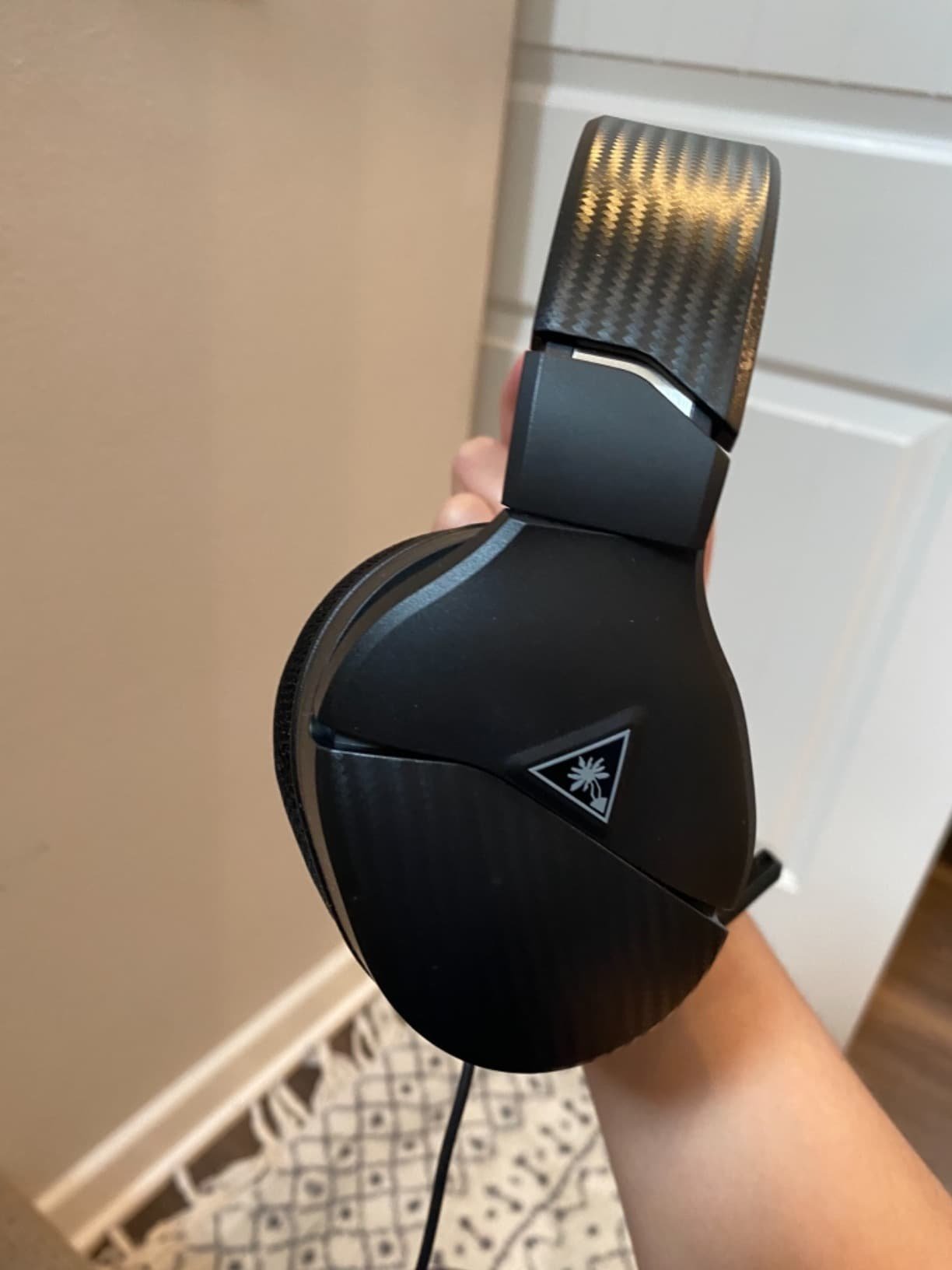
The headset weighs about 260 grams on my kitchen scale. That places it in the light-to-medium bracket. I never felt neck fatigue, even after a full workday of calls. The clamping force is moderate. People with larger heads may want the sliders near the top markers, yet the frame flexes enough to avoid pinching glasses temples.
Where build compromises do show is on the permanently attached 1.2-meter cable. It is thin and rubberized, not braided. If you roll over it with your chair it might develop kinks. A detachable cable would extend lifespan and simplify storage. Still, the strain relief at the earcup feels sturdy, and the angled plug clears most controller ports without stress.
Comfort over Long Sessions
Turtle Beach swapped the faux-leather pads from the first generation for a dual-material cushion. The face that touches your skin is a breathable mesh, while the outer ring remains synthetic leather to help seal low frequencies. I noticed that the mesh does collect lint after a few days, so a quick lint-roller pass keeps them tidy.
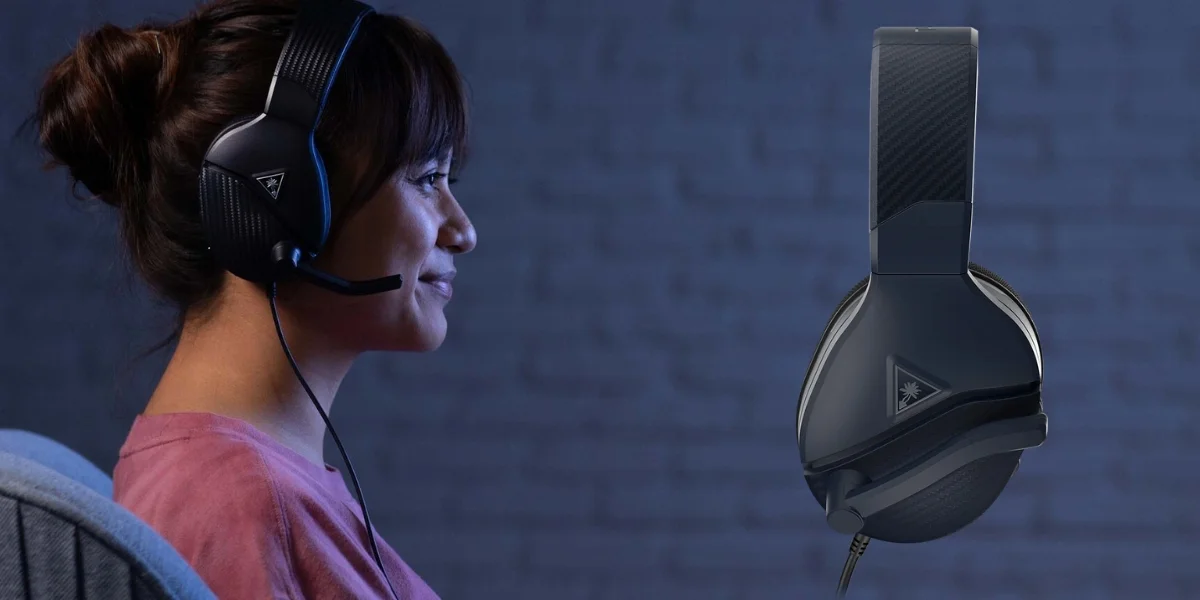
The foam inside is medium density. When I press down there is a slow rebound that suggests memory foam rather than cheap polyurethane. During two-hour editing sessions the pads kept heat build-up low. After four hours of constant wear I felt mild warmth but no moisture. The top headband pad is thin yet works because the frame distributes weight evenly.
Glasses compatibility is strong. Turtle Beach calls the feature ProSpecs. Essentially, the ear cushion has a softer channel that yields around temple arms. I tested with a thick plastic frame and had no pressure points. Users with wire-frame glasses will feel even less clamp.
Controls and Everyday Handling
All controls sit on the left earcup. From top to bottom you get a plastic boom that flips up to mute, a mic monitoring wheel, a master volume wheel, and a three-position power switch. Positions are Off, Xbox, and PlayStation. I appreciate how the switch feels firm, preventing accidental toggles. The volume wheels turn with light resistance. They do not have a center detent, so I sometimes overshoot my preferred level, but muscle memory solves that in a day.
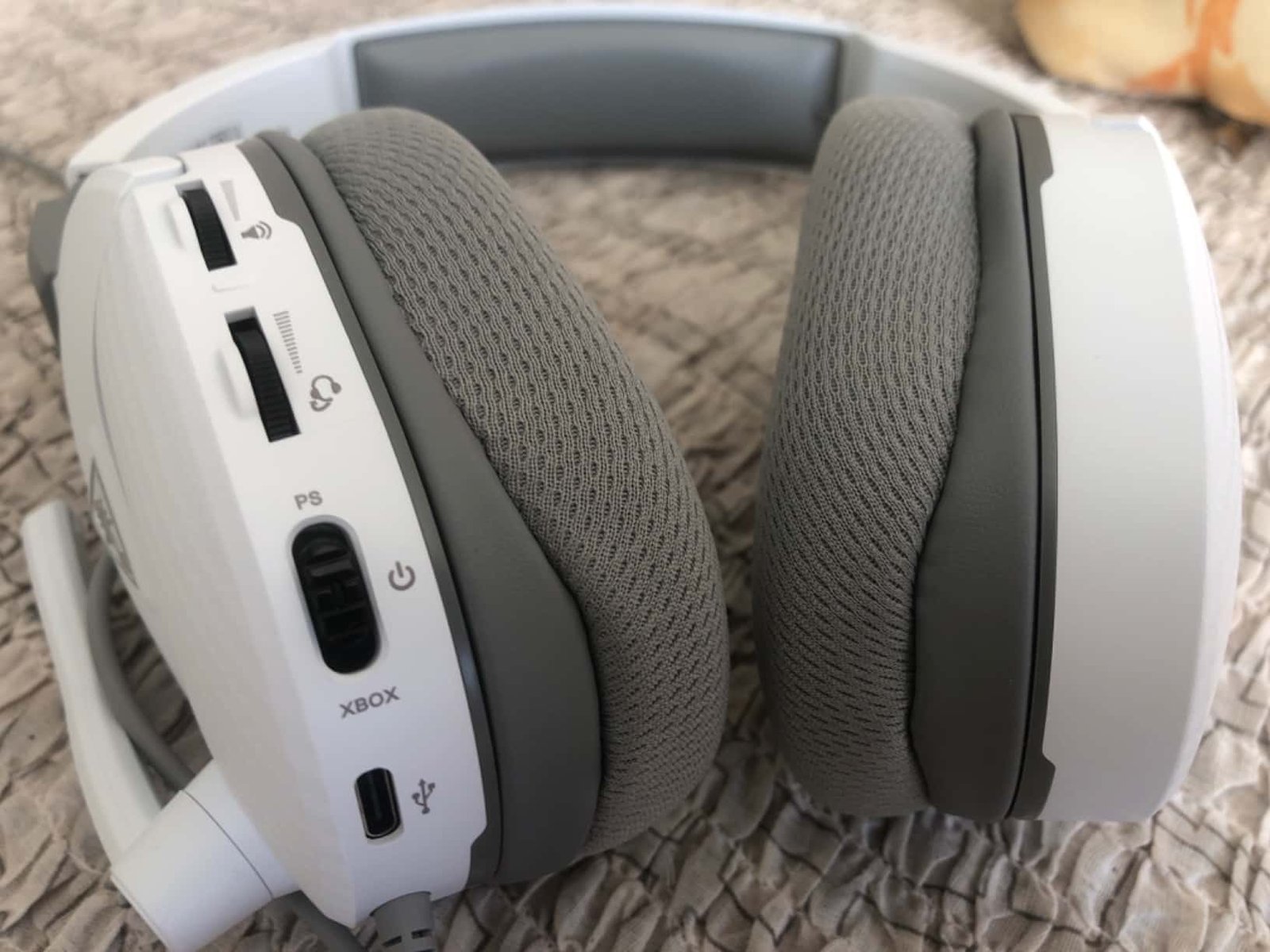
Charging happens through the USB-C port just below the switch. A full charge took me about two and a half hours on a 15-watt phone charger. Turtle Beach rates battery life at up to twelve hours. My stopwatch hit eleven hours and ten minutes across mixed gaming and music at seventy percent volume. That is close enough. When the battery dies the headset keeps working passively, though the bass boost and sidetone disappear.
Sound Test Method
I listened on four sources: a PlayStation 5 DualSense controller, an Xbox Series S controller, a MacBook Air headphone jack, and a Focusrite Scarlett Solo audio interface. Games included Apex Legends, Guardian Tales, and The Witcher 3. Music playlists ranged from jazz trio recordings to modern EDM. I also watched several episodes of The Expanse on Prime Video.
All tests used 44.1 kHz playback. I avoided EQ to capture the headset’s default tuning. For microphone checks I recorded voice clips in Audacity at 16-bit 48 kHz and asked friends to rate clarity during Discord sessions.
Audio Performance
Without the amplifier engaged
In passive mode the headset delivers a mild V-shaped signature. Bass is audible but not exaggerated, mids remain clean, and treble adds a gentle sparkle without stridency. Footstep cues in Apex stand out clearly, which helps positional awareness. Music listening is pleasant though not analytical. Acoustic tracks keep vocal presence, yet background details such as cymbal rides can blur a little, showing the limits of the 40 mm drivers.
With the amplifier engaged
Switching the amp to PlayStation or Xbox injects extra gain and a preset bass lift. The low frequencies pick up about 4 dB by my ear. Explosions gain heft, movie scores feel more cinematic, and EDM kicks thump with satisfying weight. The added energy never smothers dialogue, a pleasant surprise. I did notice a faint hiss at very low volumes, similar to amplifier noise in budget DACs. The hiss vanishes as soon as gameplay reaches normal loudness, so it is a minor quirk rather than a deal-breaker.
Microphone Quality
The boom arm folds neatly along the cup when muted. Fully extended, it positions the capsule about two centimeters from the corner of my mouth. Recordings sound natural, with minimal boxiness. Friends reported that my voice came through clearly, though they could hear keyboard clicks if I typed aggressively. Noise rejection lags behind premium headsets that use beamforming or noise gates, but in a typical bedroom it holds up well.
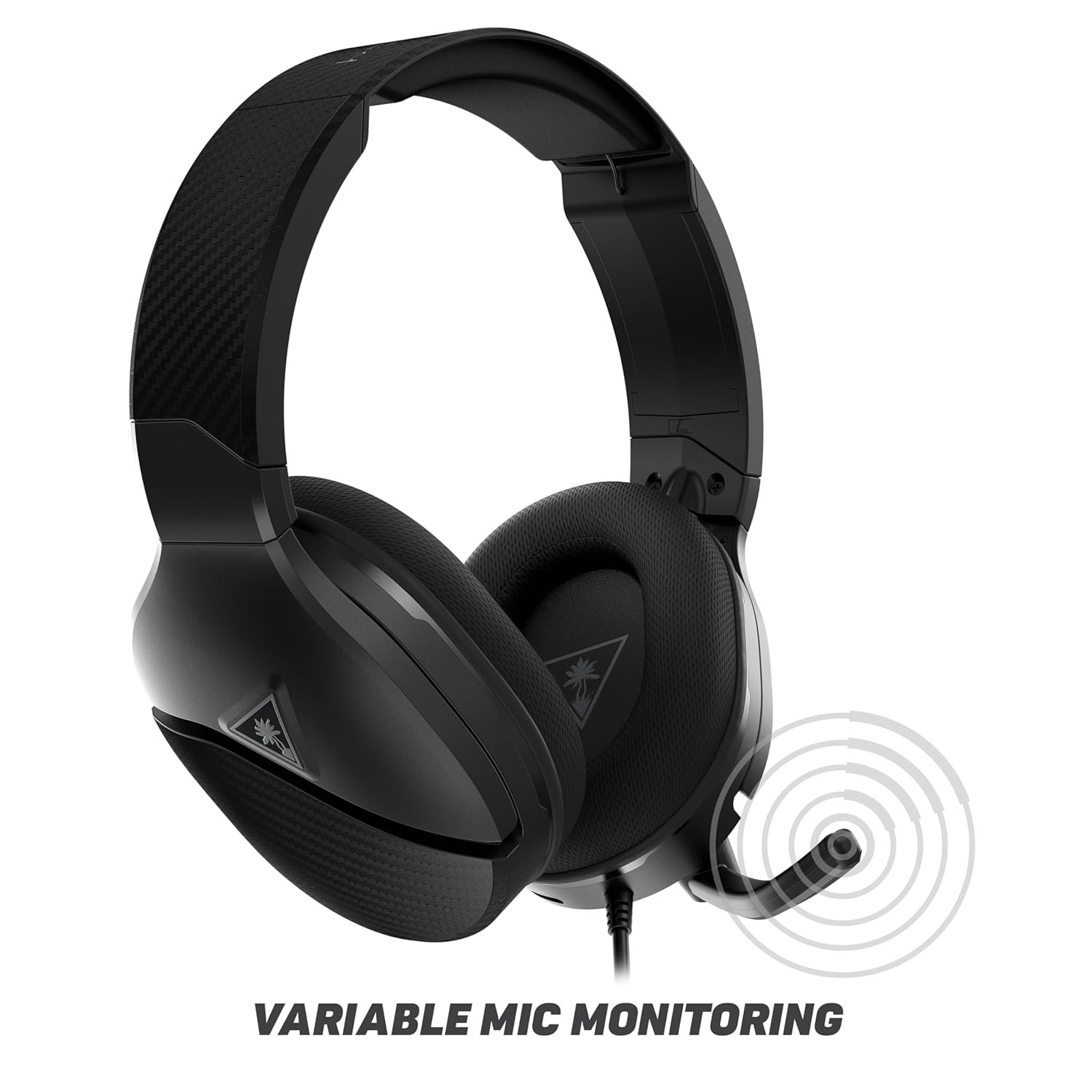
Sidetone is adjustable through the monitoring wheel. When the wheel sits at half I hear my own voice just enough to avoid shouting. This feature only works while the amp is on, so if you value sidetone keep the headset charged.
Gaming Experience
In Apex Legends I noticed improved enemy tracking when the amp was active. Directional cues carry a bit more bite. The bass lift makes explosions lively without masking footsteps, an area some competing headsets mishandle. On PlayStation 5 the overall gain compensates for the DualSense’s conservative output. On Xbox the middle amp position matches system volume well. I never found the headset too loud or too quiet; it lands in a comfort zone where you can nudge volume a touch either way.

In single-player games like The Witcher 3 the warmer tonality adds weight to sword strikes and environmental ambience. The harp and flute sections of the soundtrack maintain clarity. Anyone seeking pure studio neutrality should look elsewhere, yet for immersion this tuning is enjoyable.
Music and Movies
Switching to jazz, I played Oscar Peterson’s We Get Requests. The stand-up bass lines sit forward, yet piano chords keep separation. Treble on cymbal brushes stays smooth. With modern pop like Dua Lipa’s Levitating the kick drum feels punchy without swallowing vocals. At higher volumes there is a hint of mid-bass bloom, common among gaming headsets, but it never crosses into muddiness.
For movies I streamed Blade Runner 2049. The wide dynamic range challenged the drivers, and I heard a slight compression in bass-heavy scenes. Dialogue remained intelligible thanks to the tuning’s gentle midrange dip, which actually helps spoken words pop.
Long-Term Durability
After a few weeks of daily use, the Recon 200 Gen 2 still looks and feels exactly as it did out of the box. That’s not something I can always say for headsets in this price range. The plastic surfaces have resisted fingerprints and smudges better than I expected. The cable hasn’t frayed or kinked yet, though I’ve been careful not to yank it or wrap it too tightly.

One area that may show wear over time is the fabric on the ear cushions. It has a slightly textured weave that picks up dust and the occasional pet hair. Nothing too dramatic, but I did notice I was brushing them off every few days. If you’re planning to use this headset daily, especially in a shared environment or around kids, the build should hold up as long as you’re not overly rough.
The mic hinge also feels solid. I’ve flipped it up and down at least a hundred times by now, and it still locks into position without any looseness. That’s reassuring, especially for anyone who leaves their mic muted most of the day and flips it down only when gaming at night.
Real-World Use Scenarios
Remote Work and Video Calls
While this headset isn’t designed for professional conferencing, I used it during multiple Zoom and Meet calls just to see how it would perform. The microphone performed reliably and didn’t pick up distracting background noise unless I was actively typing. There’s no software control or advanced tuning, but for casual work-from-home setups, it gets the job done. Just keep in mind it lacks Bluetooth or wireless support, so you’ll need a 3.5 mm jack or USB adapter if your laptop doesn’t include one.
Console Gaming
This is where the headset really shines. Paired with a PS5 or Xbox Series S, the amp’s tuning helps bring out depth in games that often feel flat through entry-level headphones.
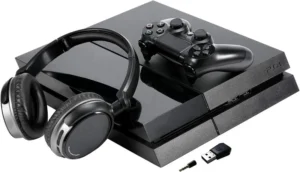
I tested it extensively on narrative-heavy titles like Hellblade: Senua’s Sacrifice and noticed the atmospheric elements carried more weight. Environmental sounds like wind, chanting, and subtle movement felt immersive, which surprised me at this price point.
Portable Gaming
The Recon 200 Gen 2 technically works with the Nintendo Switch, Steam Deck, and mobile devices via 3.5 mm jack. That said, I didn’t find it ideal for handheld use. The cable length feels a little long for on-the-go gaming, and the weight is noticeable if you’re lying on a couch or trying to move around. This isn’t a dealbreaker, but it’s something to consider if you need a headset primarily for travel.
How It Compares to Other Sub-$100 Headsets
Versus HyperX Cloud Stinger Core
The Cloud Stinger is lighter and slightly more compact, which makes it more travel-friendly. However, the Recon 200 Gen 2 feels more immersive for gaming, especially due to the built-in amp. The Stinger’s mic is a bit cleaner in noisier environments, but lacks sidetone.
Versus Corsair HS50 Pro
Corsair’s HS50 Pro has better build quality—more metal and a detachable mic—but its sound is flatter and less engaging. The Recon 200 Gen 2 has a more “fun” gaming sound, and the amp gives it an edge in console scenarios. The HS50 is better suited for those who prioritize voice calls and music accuracy.
Versus SteelSeries Arctis Nova 1
The Nova 1 wins on comfort for larger heads and has a more neutral sound overall. Still, it doesn’t offer the amplified bass and sidetone monitoring of the Turtle Beach model. Both mics are functional, but Turtle Beach’s flip-to-mute feels quicker and easier to use in practice.
Who Should Consider It
This headset is not trying to be everything to everyone. It’s built for people who want to plug in and get a decent, energized gaming sound without a lot of setup. If you:
- Use a PS5 or Xbox regularly,
- Prefer wired over wireless for lower latency,
- Want a built-in amp without spending extra on audio interfaces,
- And value comfort over flashy design,
…the Recon 200 Gen 2 fits those needs well. It’s especially good for younger gamers, budget-conscious players, or as a solid backup headset.
It’s not ideal if you:
- Need wireless convenience,
- Want high-end mic isolation for streaming,
- Or prefer ultra-flat studio sound with no coloration.
Final Verdict
The Turtle Beach Recon 200 Gen 2 doesn’t reinvent anything, and that’s exactly why it works. It understands its audience and focuses on the right things: comfort, punchy game audio, and basic quality-of-life features like mic monitoring and volume boost.
I didn’t walk away from this review with a sense of amazement, but I did walk away with a sense of satisfaction. Everything worked the way it should. I never felt frustrated, and that’s more than I can say for some much more expensive headsets I’ve tested over the years.
At under $60, it’s one of the few headsets I’d recommend without hesitation to casual console gamers or anyone who just wants to plug in and play. You’re not paying extra for RGB lighting or app control. You’re paying for a focused, functional headset that’s easy to use and hard to fault for the money.
And if Turtle Beach ever releases a Gen 3 with a detachable cable and improved mic isolation, I’d be very interested in reviewing that one too.
The Turtle Beach Recon 200 Gen 2 is available on Amazon.
Pros and Cons
After spending well over thirty hours with the headset, here’s where it stands:
What I liked:
- Comfortable fit over long sessions – even with glasses
- Fun sound signature with or without amp – especially for gaming
- Reliable microphone – good clarity for casual chat and meetings
- Sidetone control – helps keep your voice at a natural level
- USB-C charging – a modern upgrade over the original model
What I didn’t like:
- Fixed cable – not detachable, which limits flexibility
- No travel pouch or case – fine for home use, but not ideal for portability
- Amp-only features – sidetone and boosted volume vanish when the battery dies
- Slight hiss with amp on – present at low volumes, disappears in active gameplay
- No companion app or EQ options – what you hear is what you get